Google Pixel XL vs Samsung Galaxy S7 Edge
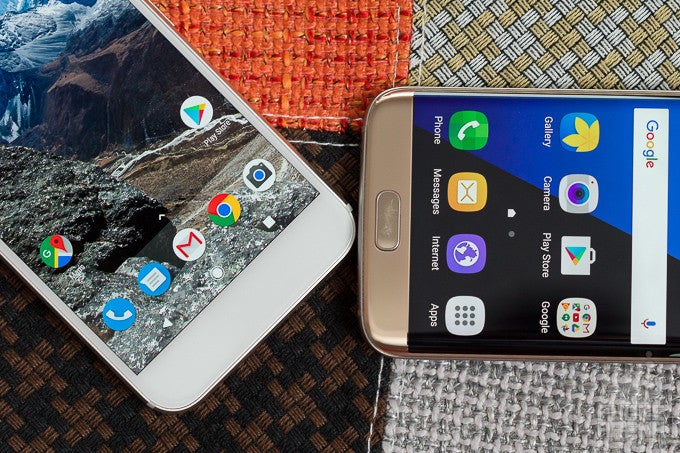
Introduction
Google's Pixel XL and Samsung's Galaxy S7 edge are the highest end 5.5-inchers with Android you can get at the moment, and, given the sizeable increase in demand for larger screens, a clash of these titans is inevitable. When comparing the S7 edge against the Pixel XL we'll give Google's phone the benefit of the doubt – after all, it is the first true foray of the company in the messy hardware business of making desirable phones, while Samsung has been at it for a good while now.
At first blush, the phones seem pretty comparable, with Quad HD panels, 12 MP cameras, 4 GB RAM and top-shelf processors, as well as similar pricing. When we factor in the design, software and performance differences, however, the picture becomes murkier, and we are here to help you clear up the pros and cons of the Pixel XL when sized up against the S7 edge.
Design
The Pixel XL's bezel largesse is no match for the elegant S7 edge curves, while turning it around reveals a schizophrenic split of premium materials.

“Hey, our $600+ flagship has to be built of premium materials, what's out there, metal and glass? Thank you, we'll take both, and try to use them in equal measure, so nobody gets offended.” That could have been the line of thinking when Google was deciding on the final design of its newly-minted Pixel line. The back of the Pixel XL is half glass, half metal, full bipolar and prone to smudges on the glass area around the finger scanner. The shiny glass back does attract a lot of fingerprints on the S7 edge too, though.
In comparison with Google's efforts, the Dual Edge panel of Samsung's beaut, with its thermoformed glass cover curves, and the reflective back in various pretty hues, look downright gorgeous, especially in the Blue Coral version. Here we have to admit that the blue Pixel XL looks intriguing, too. Samsung, however, waterproofed the phone with IP68 certification, letting you dunk it in up to five feet of water without harm inflicted. No such protection is found on the Pixel XL.
Furthermore, the Pixel XL is a rather large phone – it's taller, wider and heavier than the S7 edge, with copious amount of bezels all around, even though it employs on-screen buttons, so the one-handed operation and pocketability rounds go to the S7 edge easily. Granted, having the Dual Edge display helps in narrowing the handset's chassis, but that's about the only tangible advantage it brings. The buttons and volume rockers are sturdy, and easy to feel and press on both phones.
The placement of the fingerprint readers on each of the handsets has its pros and cons. Having the scanner on the back, like in the Pixel XL, may be convenient in certain situations, but many desk-dwellers prefer having it at the front, like on the S7 edge, as they won't have to pick the phone each time to unlock the screen for a quick check.
Display
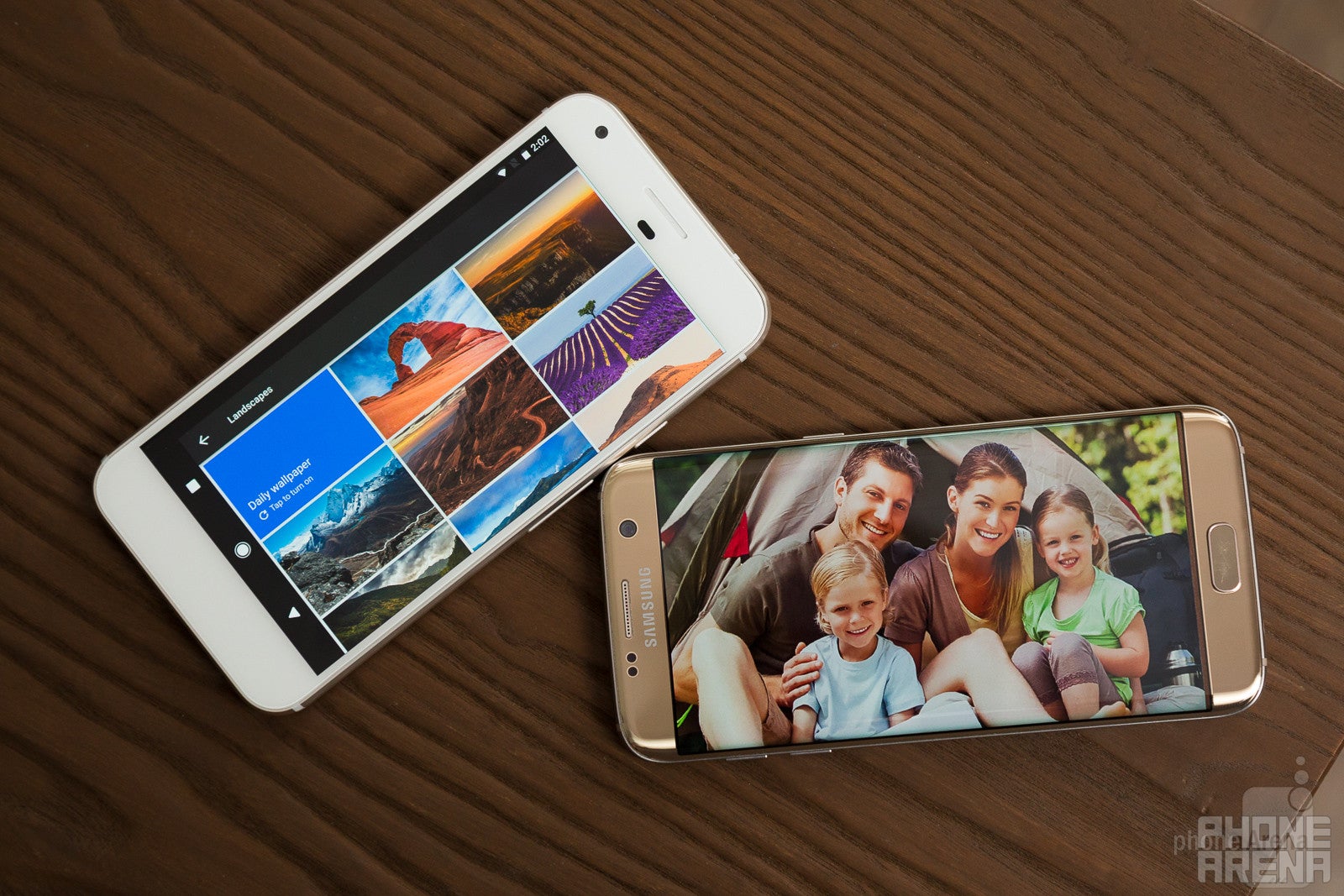
AMOLED vs AMOLED, QHD vs QHD, which one is for you? Well, despite that the two displays seem identical in terms of their 5.5” diagonal and 1440 x 2560 pixels resolution, our tests showed a difference in their performance. The imagery on the Galaxy S7 edge is closely representing the standard gamut, at least in the non-default Basic mode, while the Pixel shows a tad colder colors. The viewing angles are pretty good, though color presentation shifts way to the cold, blueish or greenish side with the slightest tilt of the handsets, which is typical of AMOLED displays.
Google's phone display is a bit dimmer, while both handsets are capable of presenting perfect blacks, increasing the overall contrast, and making for quality video playback sessions. The curved display on the S7 edge, however, takes away from the movie-gazing experience, as it distorts the picture at the upper and lower edges, while on the flat screen of the Pixel, media playback looks more natural.
Interface and functionality
Next to the feature-rich Samsung UI, stock Nougat looks and feels bland, yet speedy

The S7 edge is getting Android 7.0 Nougat as we speak, complete with a thorough interface overhaul, making Samsung's overlay more uniform in looks, and with added functionality. Google's Pixel XL shipped with Nougat out of the box, but it offers a few set-apart options you can't find on, say, the Android 7.0 updates for other phones, including the old Nexus range.
Most of the Nougat functions that the Pixel offers, like in-line replies, and notification stacking, are already present in many Android overlays, including Samsung's own, so about the only differences worth mentioning are that the Pixel phone ships with Google's unlimited photo and video backup option, and its Assistant – a chat bot whose use you might limit to the first few curiosity tryouts.
Given the proliferation of AI chat bots in niche apps throughout the Play Store, you can get something pretty close on any phone now. The Google Assistant does deal with general questions and commands pretty well, with greatly improved speed over its Google Now predecessor, but it often defaults to listing simple web searches instead of carrying back and forth convos like niche AI apps. Asking about the current events, for instance, results in playing the daily podcasts of popular news services, whereas specialized apps like Quartz do a whole chat exchange, leaving you both informed and entertained after a short session, and you don't need to ask it anything out loud, just type.
The S7 edge, in its turn, adds plenty of welcome new functions to the already feature-rich Samsung UI with the Nougat update. You can adjust the screen resolution, place third-party app options as quick toggles in the status bar, and have many more features that now come in a cleaner, more streamlined arrangement and color schemes. The Pixel XL interface feels almost bland in comparison, down to the limited choice of alarm sounds, though a lot of its potential users are usually fans of this stock Android simplicity.
To spice things up, Google has added a great Live Wallpaper switcher that ranges from randomly beautiful Google Earth shots, to geometric animations based on the time and weather, while Samsung's Theme store isn't that impressive for the most part.
Processor and memory
The US version of the S7 edge is powered by a Snapdragon 820 chipset, while the Pixel XL levels up with Snapdragon 821. That's not to say that you will find any tangible speed boost in the Pixel XL from the processing power alone, but the heavy, feature-rich Samsung interface certainly moves a bit slower than the pure Android Nougat on the Pixel handset, especially when it comes to transitional animations.
The phones come with 4 GB RAM as standard, and S7 edge starts you off with 32 GB storage, same as the Pixel XL, which also has a 128 GB model, for a Benjamin extra. Samsung did provide a microSD slot for storage expansion, though, unlike Google.
Internet and connectivity
The handsets rely on mobile Chrome for their internet-ing needs, though Samsung also offers its own browser take, which is faster, but with somewhat clunkier interface. Both phones support most wireless connectivity options and usable LTE bands under the sun, in addition to support for CDMA and GSM voice networks, so you can pretty much take them to any carrier in the US, including Verizon and Sprint. The wire connections go through a USB-C port on the Pixel, while the S7 edge is still in the microUSB era.
Camera
Surprise, surprise, Google managed to craft a phone camera that is on par with Samsung's finest - both are great, save for some white balancing issues.
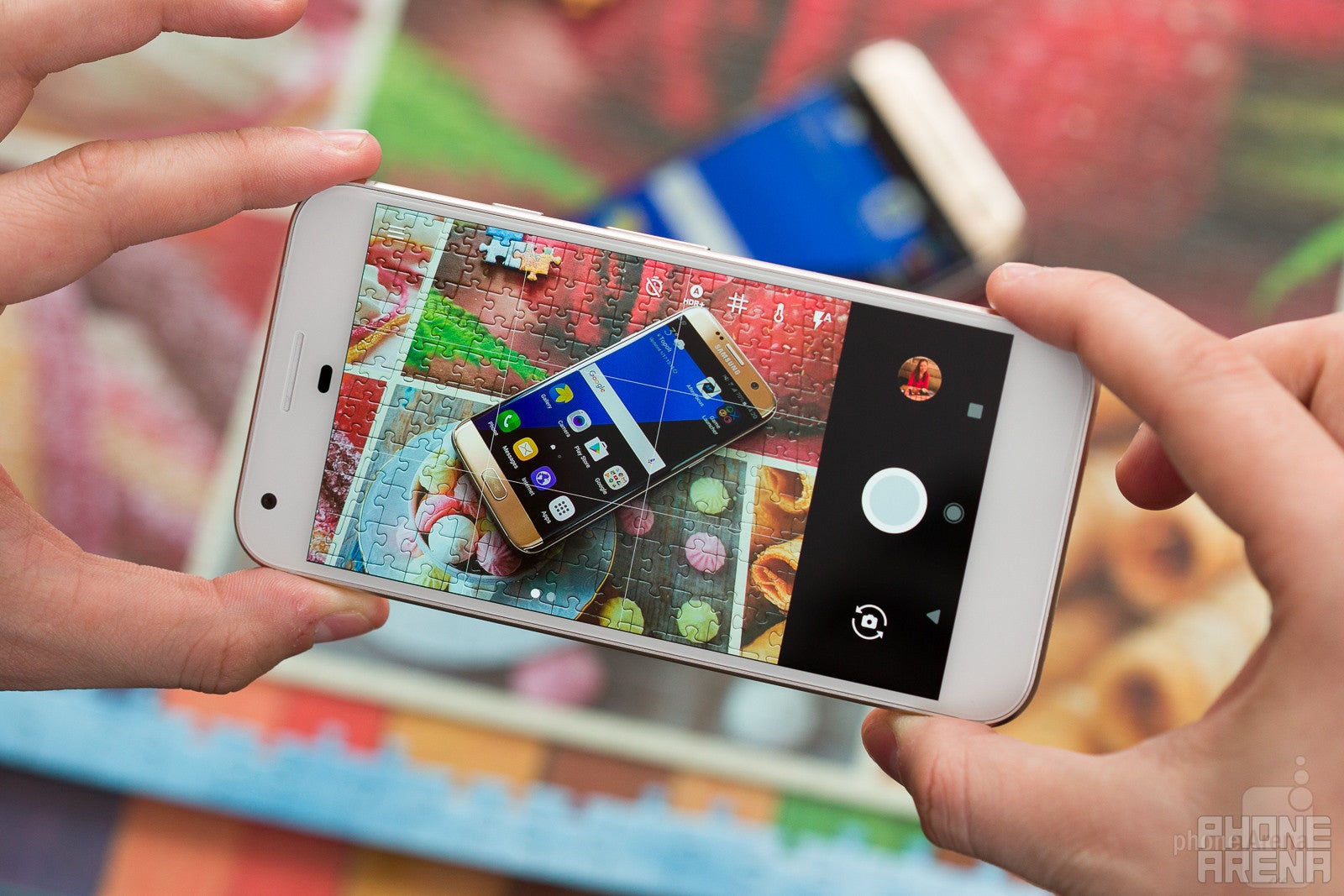
The phones ship with 12 MP cameras, but the one on the S7 edge is optically stabilized, offers larger pixels, and the lens are with wider f/1.7 aperture. It also comes with unique Dual Pixel focusing tech inherent to each pixel, which makes snapping and adjusting video focus ultrafast. Such a camera kit is enabling Samsung's phone to collect more light and produce less blurry photos, at least in theory. The camera apps also offer plenty of shooting modes and effects, as well as extras like auto HDR, Panorama and the trendy depth-of-field tricks, which Google calls Lens Blur, while Samsung simply titles Selective Focus.
While both the Pixel XL and S7 edge are certainly able to produce vivid and sharp pictures with plenty of detail captured when there is plenty of daylight present, Google's processing leaves something to be desired when it comes to white balance. Its pics are awash in warm, yellowish overtones, compared to the S7 edge, whose coloring leans slightly to the cold side, but especially compared to the actual scene before the lens.
The Pixel XL's low-light and especially night time shots, however, are surprisingly on par with the S7 edge. We say surprisingly, because our camera comparisons have consistently showed that Samsung's flagship produces night time photos that are sharper, better exposed, and with more details than those from most other phones, and the Pixel phone is almost replicating those feats. On top of that, the white balance roles are reversed compared to the outdoor pics in plenty of light. Indoors, and in low-light scenarios, it's the S7 edge that produces impossibly warm, yellowish photos, while the Pixel XL stays much truer to the original scene. Other than that, the S7 edge's low-light night shots are slightly better exposed and a tad sharper than those from the Pixel's camera, and yet with less, or with a comparable amount of digital noise, depending on the scene.
When it comes to video capture, both phones are capable of 4K recording, slow-motion and real-time HDR processing, and the clips they capture look great – with quick exposure adjustments and plenty of detail. The clips from Google's phone, however, look a tad warmer and softer outdoors, while the S7 edge has a slight refocusing advantage with its proprietary Dual Pixel tech that makes continuous autofocus mean exactly that. That's not to say that the Pixel XL's refocusing is slow when shooting video, when compared with other flagships, it's just that the Dual Pixel tech on the S7 edge is an entirely different approach that produces smoother, uninterrupted transitions.
Multimedia
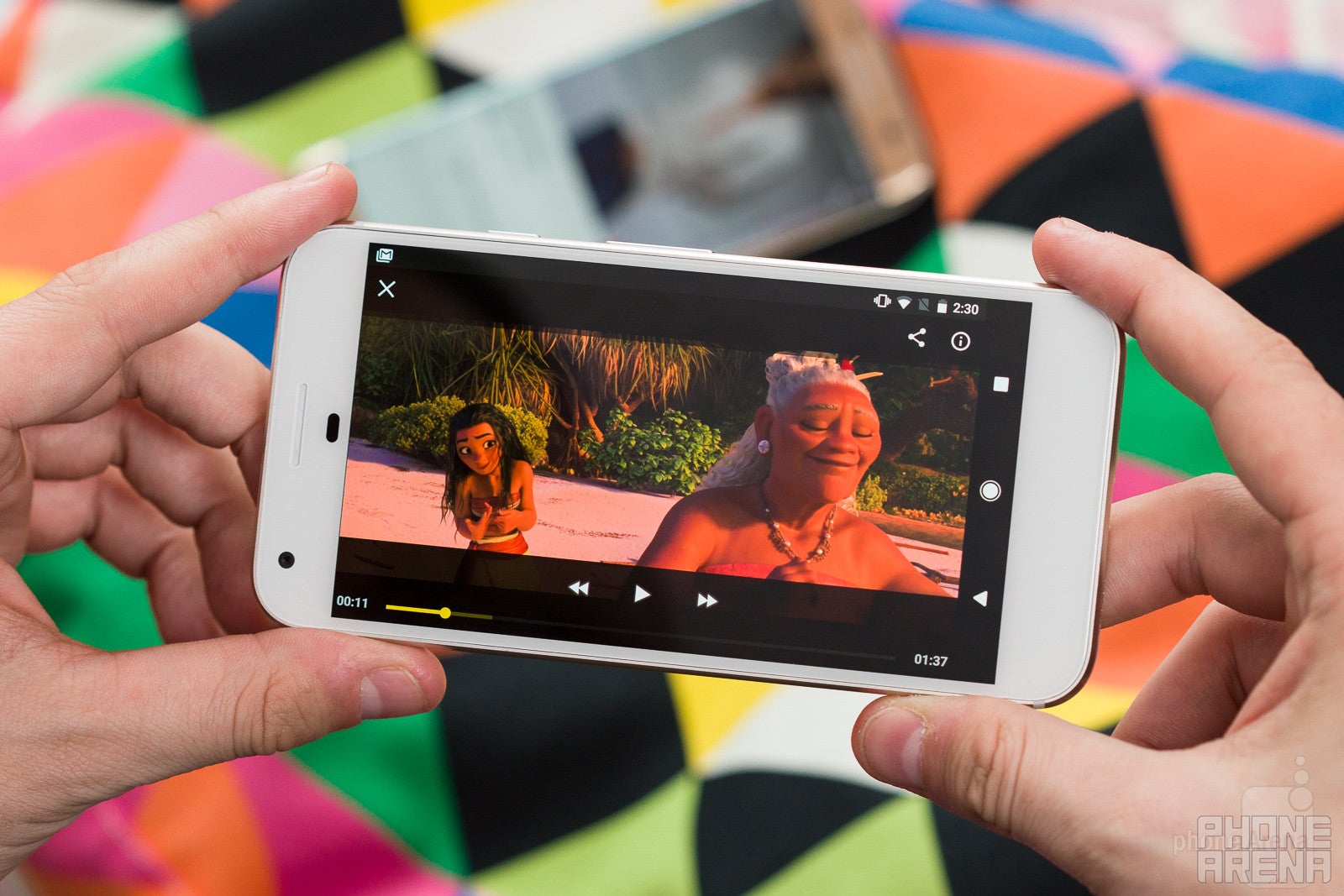
Google equipped the Pixel XL with a single speaker, which performs very well, with deep base sound, as much as it's possible on a phone, and balanced audio throughout. The S7 edge sounds a bit weak and distorted in comparison. Samsung, however, has a feature-laden Music app, complete with pretty visuals, sound modes and equalizer presets, while Google makes do with its Play Music app, which has a long way to go when it comes to looks and functionality.
As for video playback – as we mentioned before, both phones are a joy to watch movies on, given the pitch blacks and jolly OLED colors, but the curved display of the S7 edge distracts from the content somewhat. The phone does make up for it with a decked video player that support all major formats, subtitles, and pop-out watching in a separate window.
Call quality
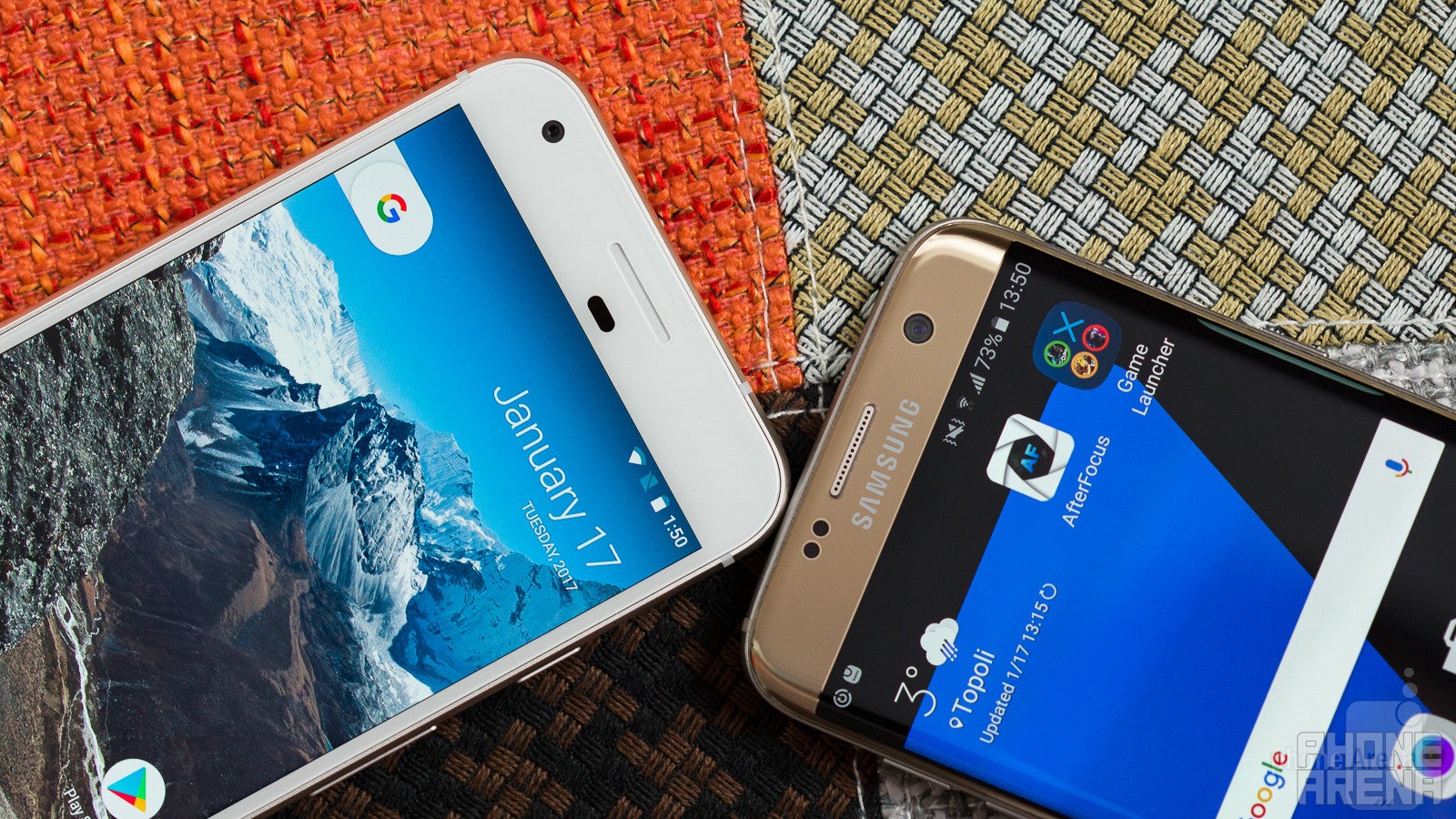
Given the high-end radio hardware and quality earpiece within the Pixel XL, it's little surprise that, when tasked with basic voice calls, the phone does pretty well. We got clean, intelligible call quality, with loud voices in the earpiece, and credible relay of our own words to the other end via the built-in noise-canceling mics. The same can be said for the Galaxy S7 edge, so no complaints from both phones in the retro call department. Samsung offers an extra sound boost option for calls, which can smash your ear drums if you are not careful to adjust the volume after turning it on.
Battery
With these specs, nothing good awaits the power user in the battery department of both phones.
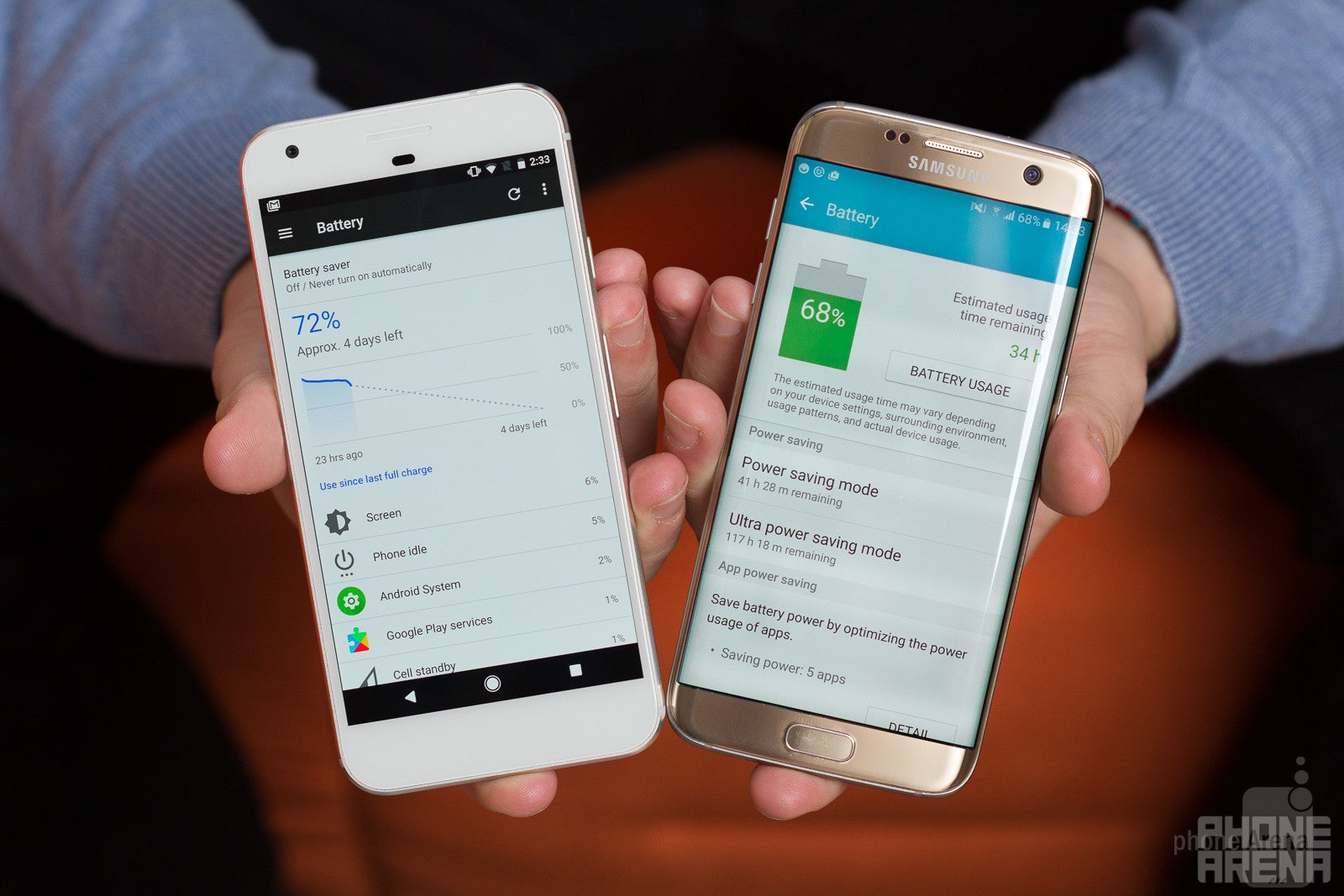
The Pixel XL and S7 edge have very similar battery capacities – 3450mAh vs 3600mAh – and managed to clock almost identical endurance on our battery test of 7 hours and 18/19 minutes. That's not overly impressive, but will be sufficient for these beasts to get you through a heavy day, provided that you don't play Pokemon Go all morning. When it comes to charging speeds, however, the S7 edge takes the cake with an hour and a half as opposed to two hours for a full charge on the Pixel XL. Samsung's phone also offers wireless charging abilities that will top up your phone as fast as the Pixel handset fares with a cable connection.
Conclusion
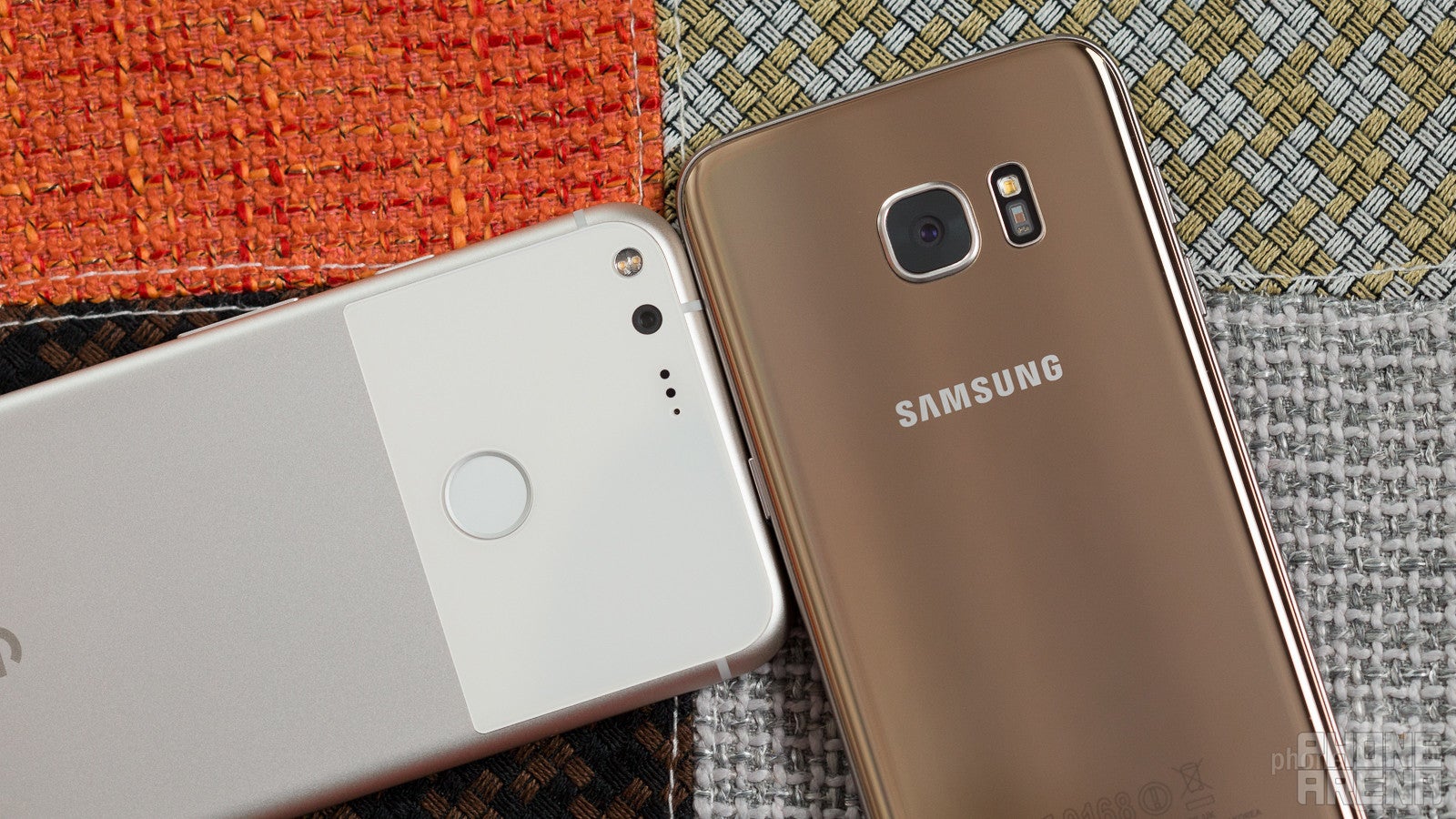
If we are gentle to Google's first real effort to build its own phones with the new Pixel line, we'd say that the Pixel XL stands it ground against the equally priced Galaxy S7 edge in most areas, and that goes for the camera department, too.
If we had to advise you on which one to get for $700+, however, we'll have to go with the S7 edge. It has more elegant and palm-friendly design, and Samsung's overlay offers more functionality than stock Nougat, if you are able to live with some slight animation jitteriness.
About the only advantage of the Pixel XL is that you will be getting the latest Android versions faster, though, given how Google is playing catch-up with manufacturer overlay features recently, that is becoming an increasingly smaller matter than it used to be. Furthermore, when we tack on the expandable storage, faster charging, and the waterproof certificate, the S7 edge becomes an even better value for the money in comparison with Google's finest.
Google Pixel XL
Pros
- Quick Android version updates
- Google Assistant's reaction speed and voice recognition abilities are greatly improved compared to Google Now
- Smoother performance
Samsung Galaxy S7
Pros
- Very fast charging
- Expandable storage
- Compact and elegant waterproof chassis
- Feature-laden interface

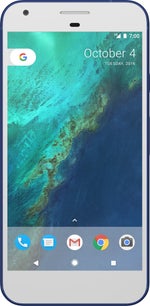



























Things that are NOT allowed: